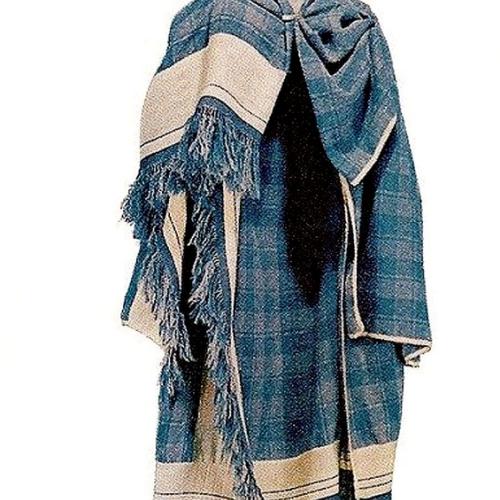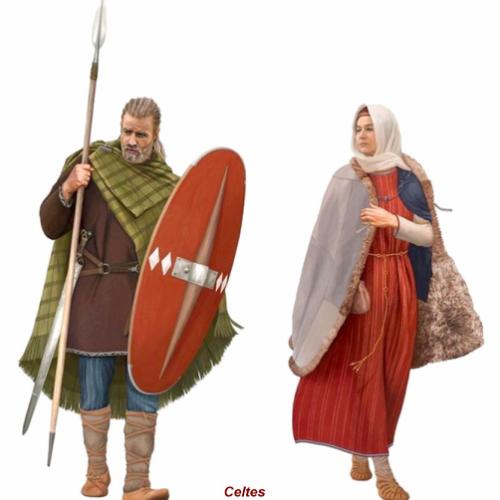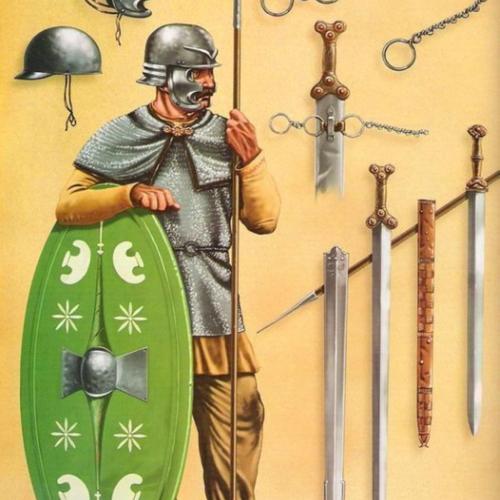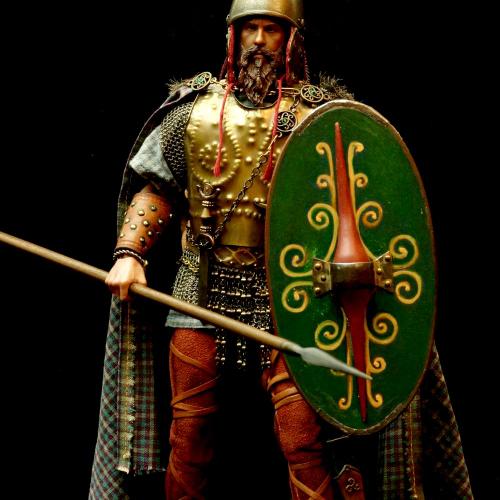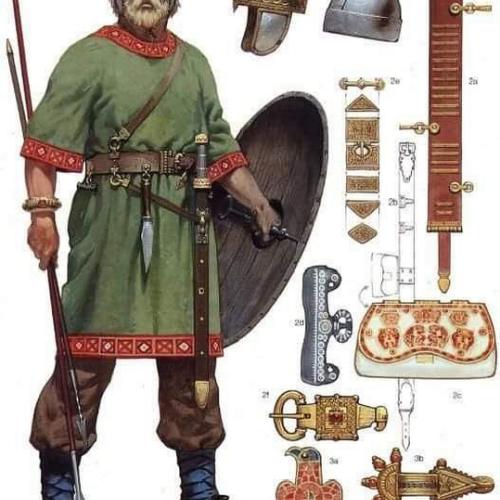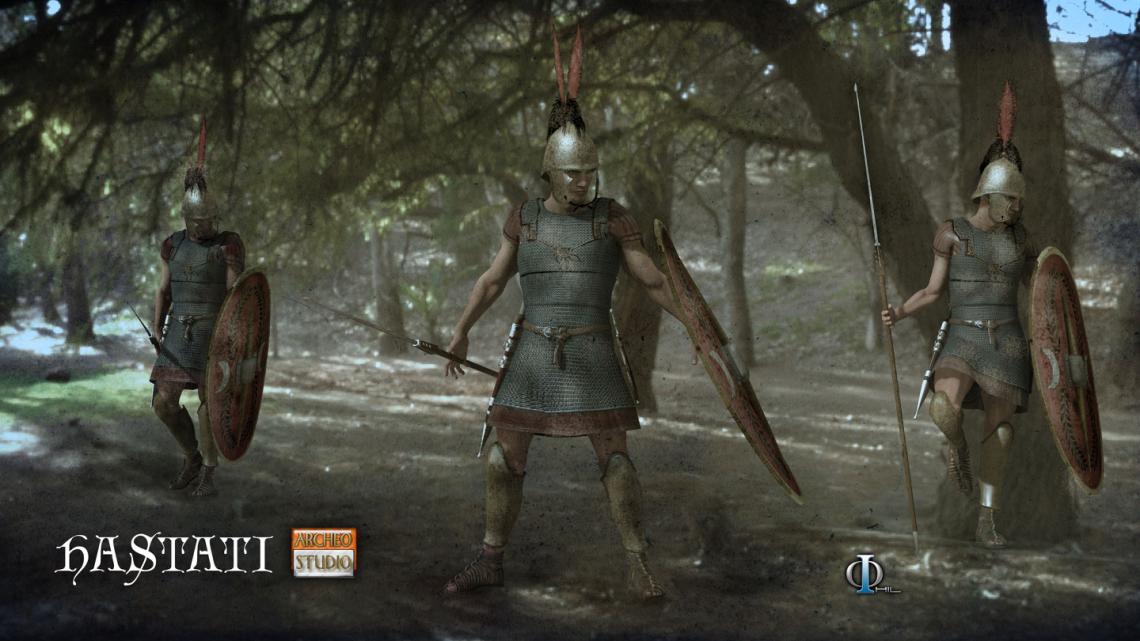Texts -"Le Vallon du Fou
3- The lioness's claws
The milky dawn insinuates itself into the foliage, paralyzed by the cold, until the dawn follows and breaks through the plant shield.
A few incandescent streaks of light burst from the tops of the ash trees, illuminating the crystallized ferns.
She has removed one of her thick leather gloves.
Kneeling to the ground, she brushes her fingertips over the glistening blades of grass.
Her hand slides slowly.
A scar marks her wrist, running up her forearm.
What does she want to do? what's her plan?
With a grave face, her gaze rises to the trees above that encircle the clearing.
A gentle slope up to the "Fairy Forest", where she used to hide with her brother in improbable huts of branches tied together with sections of ivy.
This is also where the IX th "Hispana" Roman Legion is hidden.
Ten paces behind this rebel warrior, Cyndeyrn (*) observes her, fascinated.
He has fought so many times, suffered skin-burning wounds, delivered death-defying blows with all his might at the end of his sword, hardened in the forges of the Iceni people.
These sounds torment his mind, which still hears the cries when the sun sleeps.
He doesn't know how to tell her.
He's a warrior, a clan leader. Everyone watches him too.
Watching for the moment when he gives the sign.
The command.
When King Prasutagos died, subject to the Romans, he left half his wealth and territory to his daughters and the other half to Emperor Nero.
Irritated by this division dictated to conquering Rome by a "barbarian", the Roman administrators seized all his possessions without exception.
They ordered the unrestrained beating of the widowed queen Boadicea, and had her publicly flogged.
To ensure that the lesson of the new masters' supremacy was well learned, they had her daughters raped.
To disgrace them and their descendants.
She suffered without showing her pain, her body still bearing the scars.
She's not interested in being pitied.
She has gathered together one hundred and twenty thousand warriors, many of them women, so that her vengeance will not be blind, so that it will open the eyes of all clans to the supreme value of the Celtic soul.
To be free, all or none.
Cyndeyrn saw in the oval circus of the Romans this ferocious animal, which makes souls vibrate and chained bodies tremble when it roars.
A spectacle for those who revel in the unbearable torment of others.
This indomitable power shook him to the core.
How to overcome this force, how not to lower one's eyes before this being with his lightning-clear gaze.
His hip-length mane of red hair waved gracefully as the beast dashed forward to bid a heartbreaking farewell with its sharp claws.
He admires her.
The queen of a whole people, his queen.
anwen", a name that means "so beautiful "so beautiful in the language of the Celts.
Should he tell her so, as the rage of battle takes place in this long clearing bathed in the glow of hope?
She straightens up, turns and stares out at the clans, the clusters of people already harnessed, the thousands of faces whose breaths hang on her every move.
She approaches him.
Cyndeyrn's eyes go wide, all his senses are alert, his queen has something to tell him.
To him and to none of the other clan leaders around him.
Proud as an arrow that pierces the target's heart, he stands so straight he resembles the trunk of the sycamore against which his dark-blue shield is set.
She reaches up to his face and says in his ear:
"Cyndeyrn...
Take the carpets from our tents and have strips cut from the skins, arm-length and foot-wide.
I need 200...
Get all the thin rope you can.
If you have to, use from our tents.
Ask your warriors and those of Glyndwr (**) to help you.
We must be quick."
What does she want to do, what is her plan?
(*) [pron. phon. "Cundeïrn"]
(**) [pron. phon. "Glendour"]
The rest is HEREjust after the supporting documents
Documentary supports (extracts)
"Le Vallon du Fou
Click to enlarge
Click to enlarge
4- "Cuneus versus Vis viva
First part: " Hastatus Prior
The crimson banner is adorned with a golden crown, with the letters "SPQR" at its center.
Latin for "Senatus PopulusQue Romanus", meaning "The Senate and the Roman People".
This motto was the emblem of the Roman Republic, and would remain the motto of the Empire.
Faustus is in no mood to leave the tent, its canvas stiffened by the icy dawn. The air seeps in slyly.
The skins covering his rough cot allow a few hours' sleep, but no more.
In the early hours of the morning, a light thermal breeze forces his reddened eyes to open.
Slowly, he repeats the ritual gestures of a soldier waking up.
Fifteen years of basic toiletry, but essential to remain a human being.
No messy hair or beard, white fingernails, folded tunic pulled over clean body cloths.
It is accompanied by a band of cloth highlighting the belt ("Cingulla"), to which the scabbard of the sword ("Gladius") is attached.
To distinguish himself from the foot soldiers, like all those of his rank, Faustus covers himself with a colored scarf.
That of the centurions.
Then come the successive layers of military garb.
The "Lorica segmentata", the armor made of metal strips held together by leather straps.
Recognizable by all warriors, friend and foe alike, it was the envied protection of all, the last bastion of a man about to face his destiny.
Some still wear the cuirass worn by soldiers at the end of the Republic, the "lorica hamata", a chain mail made up of 20,000 to 30,000 interlaced iron rings.
He commanded a hundred or so "Hastati" who trained twice a day, whatever the weather. These are the Legion's youngest recruits, athletic and therefore always placed in the front line, fighting with the "Hasta" (spear) in defense and the "gladius" (sword) in melee. Their feathered helmets were paradoxically derived from Celtic models.
In this officer's eyes flashed the faces of men barely out of their teens, enlisted in the legion for reasons he no longer understood.
Whether they're attracted by a paycheck that guarantees a comfortable daily life, provided they live long enough to appreciate it, or intoxicated by adventures in which the heroism of the invincible warrior is glorified, favorite arguments of recruiters who themselves don't believe in it, sometimes left to fend for themselves by poor families whose only wealth is their lives, or some sons in love with a young woman so beautiful that her hand has been given to someone other than him, a "beau parti".
Faustus looks at his legionaries.
How many will still be with him tomorrow?
He hopes for the day when order will come.
When Rome deems that he has now endured enough merciless fighting, enough blows, wounds and psychological traumas that we keep quiet out of pride.
For fear that those he commands with such rigor will discern a doubt in the certainties of the hero of the prestigious IX Legion.
His Hastati all see him as a role model, the father they obey without question, who risks his life with them, if not for them when necessary.
The one they would like to become when, in due course, having climbed the hard way up the command ladder, they too receive this order.
"Legionnaire, Rome grants you the privilege of returning to your own.
You have served with dignity, honor and courage.
You have never failed, never retreated or dishonored your men.
The "Roma Invicta" (Unconquered Rome) grants you land on the outskirts of the imperial residence of Arelate (Arles)".
He awaits this order, this arable land, a farmer's life, an ear of wheat in the corner of his mouth, contemplating his first harvest with a gentle woman he doesn't yet know.
These valleys where we wander with pleasure, bathed in sunshine and garrigues with intoxicating scents.
Where the cicadas reign, singing at the top of their voices of the return of peace.
The end of war, the calm.
A place to rest.
For ever and ever.
You still have to put on your legwarmers to withstand the cold, the "Femoralia" (1) covering the upper leg and the "Tibialia" the lower.
Then the belt ("Cingulum") with pelvic protection ("Baltea") made of metal medallions on leather bands, and the shoulder strap ("Balteus") encircling the torso to support the sword and scabbard together.
And finally, the "Caligae".
These sandals are made of crossed leather straps, sewn together and laced, resting on a thick leather sole, studded on the walking surface.
A condensation of techniques that have evolved over time to guarantee a certain comfort and remarkable resistance for these soldiers, who can walk more than twenty kilometers in a day in one-hour cycles. Fifty minutes of effort and ten minutes of recovery.
A legionnaire's normal pace is five kilometers in fifty minutes.
Performances worthy of trained athletes, united in the esprit de corps embodied by their centurion and his seconds.
All warriors dread them.
In Rome, war was thought of as an exact science, theorized by strategists and implemented by engineers and craftsmen trained in these cutting-edge techniques.
Each legion had its own technical workshop for maintenance, repair and even the casting of new equipment..
They have no weak points.
How can they lose this fight?
The youngest of the Hastati seem worried by the provocative, raucous cries of the Celts on the other side of this long, icy clearing.
Their older comrades pat them on the "Galéa" (helmet), laughing ostentatiously, to reassure them.
"Listen to these barbarians! Another one who got his... stuck in his junk shield!"
Gritty laughter erupts, finesse and good taste are out of the question as the assault prepares.
The men huddle together, talking without any real topic. The moment everyone dreads is approaching.
They detach themselves from this objective, disquieting reality.
The individual is a fragment of a group that, once on the march, represents an insurmountable wall.
Barbarians are driven by an individual ideal.
They must surpass themselves to equal the mythical heroes. A compendium of strength dictated by their gods, exacerbated brutality in the service of a cause that justifies bloodshed.
Each is a hurricane whose only limit is the annihilation of the enemy.
This primal mode of combat constitutes the technique known as "la mêlée", specific to the Celts, howling hordes coming from everywhere and nowhere, impossible to predict, the nightmare of combat theorists where everything is regulated according to quasi-arithmetical percepts.
Roman strategists were well aware of this, and from then on, legionnaires never ceased to organize their ranks in the opposite way to the Neolithic ideal of the warrior fighting for his honor, without anticipating what the brother-in-arms at his side would do.
Their formations are collective, their movements coordinated, so that every enemy will always face a cohort bristling with lethal spikes.
Theoretical strategy and its inseparable corollary, discipline, enabled the legions to annihilate troops sometimes four or five times their superior numbers.
Rome has no need to fear its enemies.
She has no weak points.
"Roma Invicta!
(1) Femoralia (or "Feminalia") are sometimes described as short pants, "Bracae" ("braies") and Tibialia as leggings.
The Continuation is HERE ...
A false image of history: standardized legionnaire equipment
The Roman army is generally depicted in film, comics (our Asterix and Obelix celebrities) and 3D designs (video games, animated films) with standardized equipment.
From uniforms to individual weaponry, the impression of a human military block more easily impresses the viewer/reader/player.
Military schools (ESM Saint-Cyr in particular, but also Sandhurst UK and West Point USA - twinned with Saint-Cyr) teach "cohesion" as a vital necessity.
Today, this is reflected in the standardization of equipment and uniforms, with clear advantages in terms of manufacturing and maintenance costs.
The Roman army, like no other before it, developed a kind of standardization of its equipment for the same reasons.
Not to mention the need to defend against the Celtic invasions (in particular), which ravaged Rome, then a kingdom and then a republic, relying solely on the hasty armament of its children to survive.
And this was long before the Roman legions invaded Europe, then turned their attention to the East.
One man's excesses do not excuse another's, of course.
But when peace returned at the cost of citizens' blood, military structures, brilliantly reorganized as they were, became formidable instruments of conquest, rapidly becoming indispensable to the realization of certain rulers' dreams of power.
Whether kingdoms, republics or empires, all came to terms with this move towards an army of conquest, which did nothing more than defend its soil.
The offensive structure of the Roman army from the Republic to the Empire is a case in point.
That said (let's not digress into the question of the law in/of war), the Roman army was not limited to the legion (Legio) alone, due to the equally important auxiliary units
The very notion of uniform was not self-evident among the Romans.
The massive representation of Romans uniformly clad in the "Lorica Segmentata" is an error.
Legionnaires bought their armor.
The wealthiest could afford the famous "Lorica Segmentata", while the poorest had to make do with "Lorica Harmata" (chain mail) or even "Lorica squamata" (scale cuirasses) of even older design.
Like cars today, it was possible to buy "second-hand" cuirasses: the cuirass of a legionnaire who had died in battle or become unfit for service, or that of a legionnaire who sold his previous model to buy a more elaborate cuirass
The Roman army also made extensive use of its enemies' weapons.
Examples include the "typically" Roman "Scutum" (shield) of Samnite origin and the "Gladius" (glaive) of the Celtiberians in Spain.



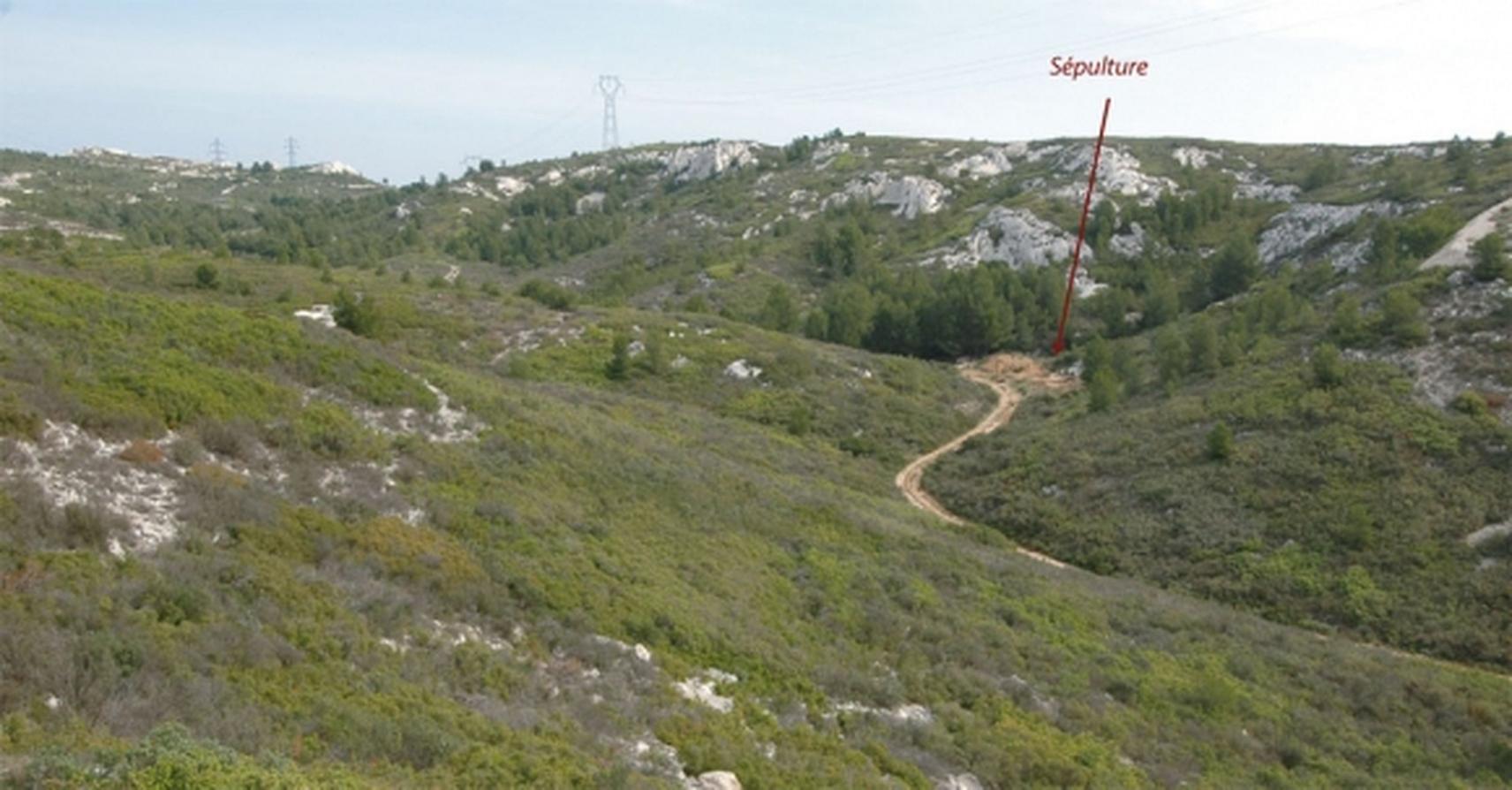
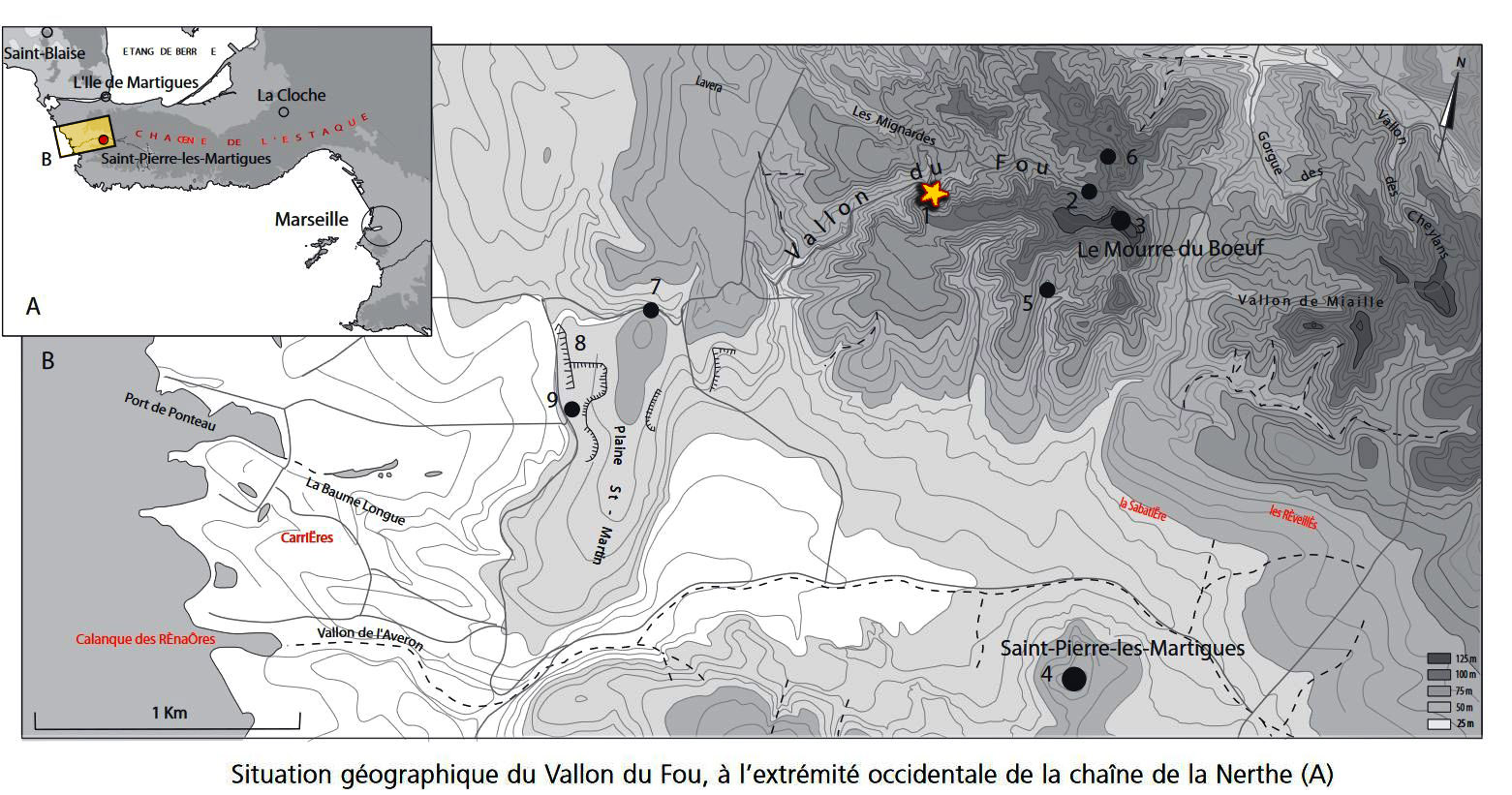
.jpg?t=45600630_c251_4d62_b8f5_84fc0b844b46_0e2455c0_8e81_42ed_8948_6f6f917ea287)
.jpg?t=45600630_c251_4d62_b8f5_84fc0b844b46_0e2455c0_8e81_42ed_8948_6f6f917ea287)
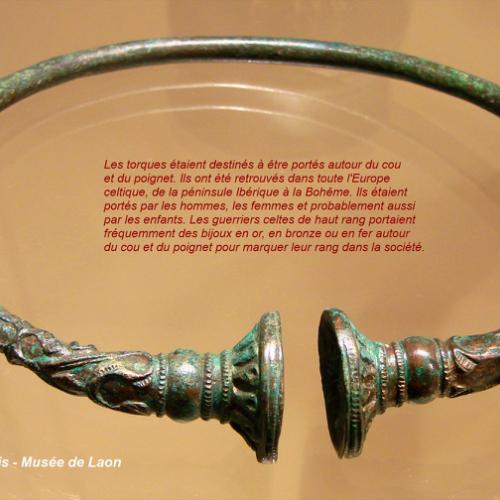
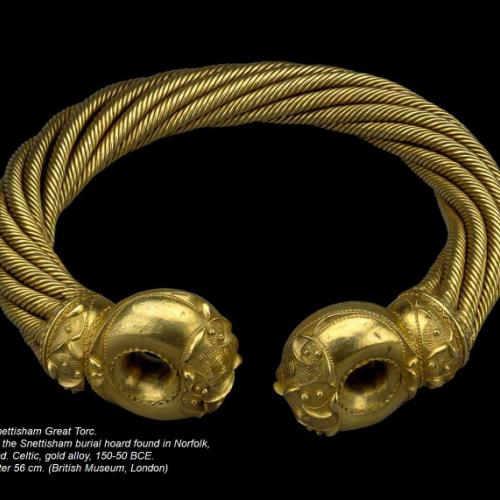
.jpg?t=45600630_c251_4d62_b8f5_84fc0b844b46_0e2455c0_8e81_42ed_8948_6f6f917ea287)
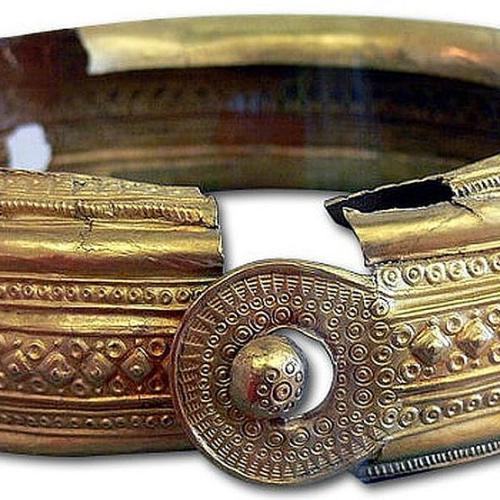
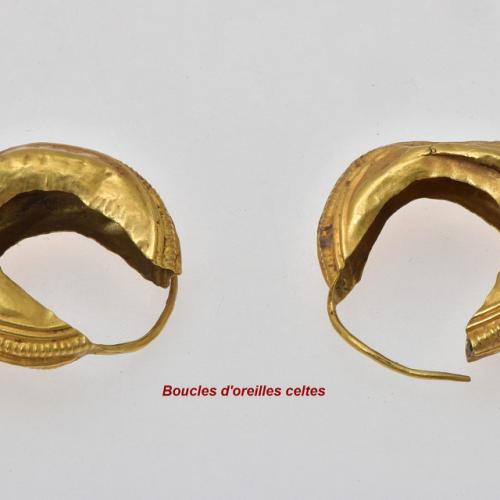
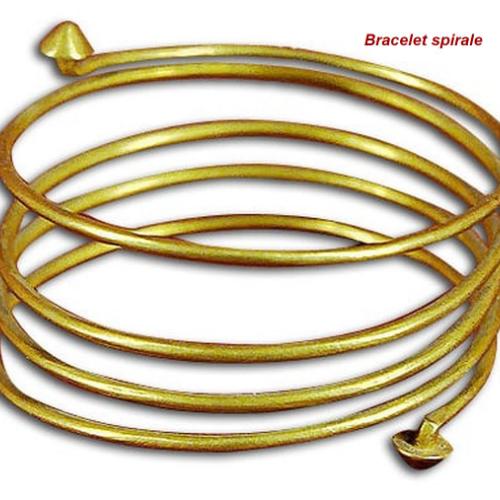
.jpg?t=45600630_c251_4d62_b8f5_84fc0b844b46_0e2455c0_8e81_42ed_8948_6f6f917ea287)
.jpg?t=45600630_c251_4d62_b8f5_84fc0b844b46_0e2455c0_8e81_42ed_8948_6f6f917ea287)
.jpg?t=45600630_c251_4d62_b8f5_84fc0b844b46_0e2455c0_8e81_42ed_8948_6f6f917ea287)
